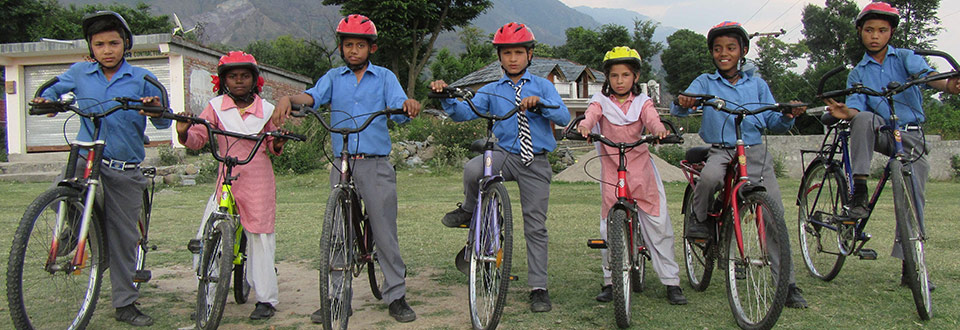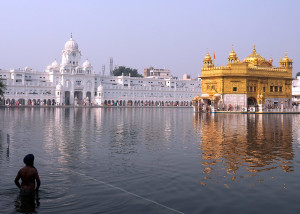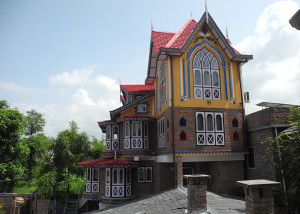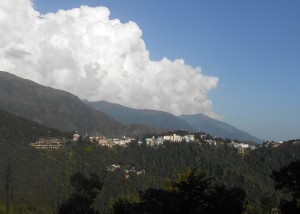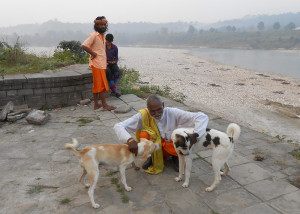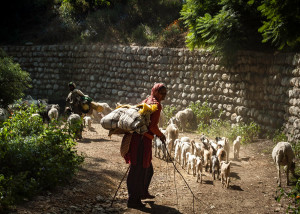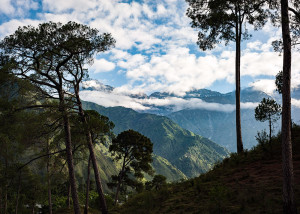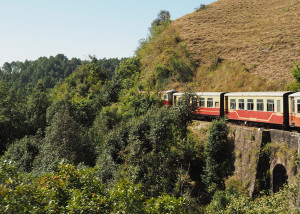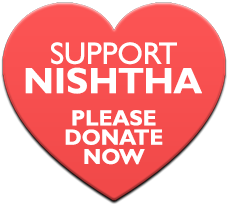11 days cycling, average 40 km/day (25 miles)
This trip covers quite a range of different terrain and cycling conditions, from short easier days on good roads to a couple of steeper and longer climbs on poor quality roads. It should be within the reach of anyone who is a regular cyclist with a good level of fitness.
Cost: £1,300 (includes £500 donation to Nishtha)
This ride has been set up as an event to raise funds for Nishtha Rural Health, Education and Environment Centre, an NGO working in the villages of Himachal Pradesh through which we will be cycling. It features an interactive visit to the centre in Rakkar village to engage with the health and community work going on there and interact with the local young people. Nishtha runs a very active after school programme and has a number of bicycles in order that the children learn how to ride. They will be very excited to meet you and engage in any activities you can dream up to help them enhance their skills and enthusiasm for cycle riding.
The trip is not designed to be too strenuous overall but do remember this is the Himalaya and it is certainly not flat. Himachal Pradesh in the Western Himalaya is perhaps one of India’s best kept secrets. This tiny state rises up from the fertile plains of the sub-continent to cross five mountain ranges before meeting the border with Tibet. Not surprisingly it has a fascinating history and the landscape today reflects the tremendous geographical, climatic and cultural diversity of the region.
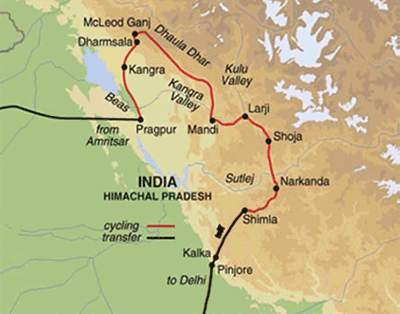 We begin our trip in the Sikh’s holy city of Amritsar, home to the fabled Golden Temple. You can’t fail to be moved by the resplendent temple, the spiritual heart of the Sikh faith. Built in the 16th century, the gilded Hari Mandir rises from the middle of a reflecting lake and is surrounded by white marble. We’ll visit it twice, once in the evening to see the evening ceremony and again in the morning to catch the sun’s rays on the golden domes and hear the devotional songs.
We begin our trip in the Sikh’s holy city of Amritsar, home to the fabled Golden Temple. You can’t fail to be moved by the resplendent temple, the spiritual heart of the Sikh faith. Built in the 16th century, the gilded Hari Mandir rises from the middle of a reflecting lake and is surrounded by white marble. We’ll visit it twice, once in the evening to see the evening ceremony and again in the morning to catch the sun’s rays on the golden domes and hear the devotional songs.
After Amritsar we travel by road through the Punjab and into the Kangra Valley where we will stay in the heritage village of Pragpur/Gurli. These twin villages were founded about 3 centuries ago as home to some of the wealthiest merchant families and are rich remnants of a bygone age with fascinating buildings drawing their architecture from all the influences India has to offer. It is from here that we start our cycling, weaving our way through the Kangra Valley to Dharamsala, home of the Dalai Lama and the Tibetan refugee Community. We take time to visit Nishtha, a village based NGO and learn about their work with the local community to empower and strengthen them with health, education and environmental programs. We visit the artist village of Andretta with its vibrant pottery and then ride on to the foot of the Kullu valley where we cross the Beas River to climb the Jalori Pass (3350m), dip in and out of the Sutlej Valley before ending up in ShimIa. Enroute we take in ancient forts, mystical temples, traditional villages and world famous sights and finally descend to the plains again on the Viceroys narrow gauge railway.
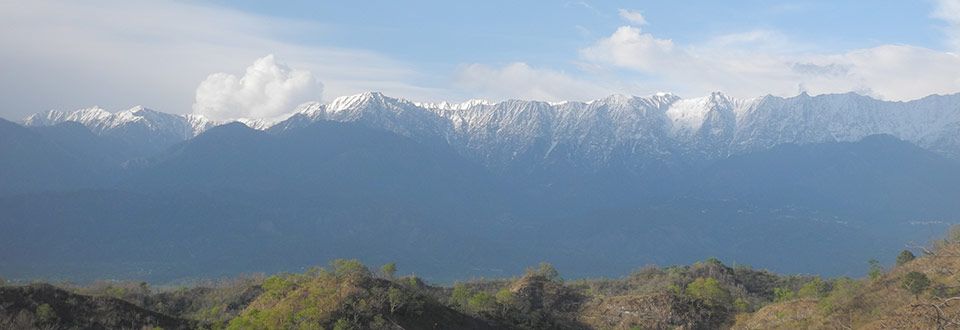
ITINERARY – Starting from Amritsar
Day 1 – Sunday: Arrive in Amritsar
We meet in Bandharis Guest House during the day. In the evening we pay our first visit to the Golden Temple to experience the impressive evening ceremony.
Day 2 Monday: Visit Golden Temple; transfer to Pragpur/Gurli
In the early morning we will pay a second visit to the Golden Temple from where we travel by road to Pragpur/Gurli, (5 hours) in the Kangra valley. Evening walk around the village.
Day 3 Tuesday: Pragpur (800m) to Kangra (950m) – 45km
We start our bike ride by cycling along the quiet backroads of the Kangra Valley, passing through a sub-tropical landscape of pine, sal and bamboo forest, cultivated fields and small villages. The terrain is undulating with short climbs and ascents, it is a great introduction to cycling in India. We end the day in the small town of Kangra, once the capital of the region on the edge of the Dhauladhar range. Time permitting we can cycle (or take a taxi!) to the crumbling yet sturdy Kangra fort, 4km away, which has stood for over 1000 years.
Day 4 Wednesday: Kangra (950m) to Mcleod Ganj (2000m) – 28km
A short but steep day climbing over 1000m to the hillstation of Dharamsala/McLeod Ganj, home to the exiled Dalai Lama. We leave early to cycle in the cool morning and cross the last of the Kangra Valley to the base of the Dhauladhar, the outermost range of the Himalaya. The altitude gain is most in the last 10km of the day when we follow the road up from lower Dharamsala in a series of hairpin bends to Mcleod Ganj. It is reasonably graded so can be done at a steady pace – and there are plenty of places to stop and admire the views across the valley and the 4000m peaks above us. This amazing town is a fine reward and we have time to wander around the small but crowded bazaar and enjoy a guided tour of the Dalai Lama’s Temple and introduction to the Tibetans in Exile.
Day 5: Thursday: Mcleod Ganj (2000m) to Sidhbari (1200m) – 15km
In the morning have our first great descent, back down the road to Dharamsala visiting the Tibetan Administrative area and Library of Tibetan Works and Archives before heading out of the main town to Sidhpur where we are welcomed at Nishtha Community Centre for lunch. We will learn about the work done by Nishtha and then participate in an interactive programme with the children who have been learning how to cycle on the village ground. (Breakfast, lunch and dinner included)
Day 6 Friday: Sidhpur (1200m) to Andretta (1100m) – 44 km
Before leaving Sidhpur we can pay a visit to the Norbulingka Institute, a fascinating Tibetan arts and cultural Institute set in a garden. Above us loom the peaks of the Dhauladhar range of the outer Himalaya, some 4500m high. A fantastic day of cycling across varied terrain, but with no major ascents or descents brings us to the small village of
Andretta, home to a curious selection of artists and potters. We stay in a private village house and can wander freely about the village and its surrounds. (Dinner included)
Day 7 Saturday: Andretta (1100m) to Jogindernagar (1500m) – 35km
A day of cycling through the lovely scenery of Himachal’s prime tea growing area visiting the quietly famous Shiva temple in Baijnath. Dedicated to Shiva in the form of Vaidyanath, the Baijnath temple has been continuously under worship ever since its construction in 1204 A.D. One of only 12 such temples in India, it is also a beautiful example of the early mediaeval temple architecture known as Nagari style. The beauty of today’s ride is really the scenery – the tea gardens, grazing buffalo, wild forest, daily village life all set against the backdrop of the Dhauladhar range. We stay the night in Jogindernagar, home of the narrow gauge Kangra railway.
Day 8 Sunday: Jogindernagar (1500m) to Mandi (750m) – 50km
Today we leave the Kangra Valley behind and head for Mandi at the foot of the Kulu Valley. We are closer to the mountains now, with a different topography and vegetation as we move into the temperate zone. This is a slightly busier section of the ride, following the line of the Dhauladhar ridge with some steeper ascents to cross small ridge spurs before descending into the market town on Mandi. With its houses clinging to the banks of the Beas River, Mandi is a bustling town with over 300 old and new temples. Time permitting we will visit one or two of the best.
Day 9 Monday: Mandi (750m) to Larji (975m) – 45km
We cut though the Outer Himalaya following the course of the Beas River into the Kulu Valley. Its striking landscape make it a popular Indian tourist destination though traditionally its economy has been based on agriculture; it is famous for its apple orchards, hand-woven shawls and caps. As we trace the contours there are no steep sections today but there is a short tunnel which you might decide is best ridden in the support vehicle. The mountains rise steeply either side, with terraced fields and the famous Kulu orchards becoming more dominant. Larji (975m) is a small hamlet providing excellent trout fishing. The rest house is located in a stunning position between the torrents of the river Sainj & Tirthan before they join the Beas. (lunch included)
Day 10 Tuesday: Larji (975m) to Shoja (2600m) – 36km
From Larji we begin to climb slowly. We are on the fringes of the Great Himalayan National Park – home to bear, leopard and wild cats and surrounded by temperate forest – pine, oak and horse chestnut. We pass through Banjar, which with its with attractive wood-fronted shops lining the narrow street, has the best examples in the area of timber bonded Himalayan architecture in the fort-like rectangular temple of Murlidhar (Krishna). Halfway to Chaini, 3 km away, the large Shring Rishi Temple is worth a look, with beautiful wooden balconies and an impressive 45m tall tower. The entrance, 7m above ground, is reached by climbing a notched tree trunk, in a style of architecture adopted from eastern Tibet. From Banjar the road steepens to Shoja, a village surrounded by dense forest of deodar and larch. Shoja is a picture postcard village with apple groves and long wooded walks, the village is on a mountain ledge overlooking the valley. (lunch included)
Day 11 Wednesday: Shoja (2600m) to Luhri (800m) – 40km
A tough day as we head over the Jalori Pass at 3223m. A steady climb turns into a rather steep final ascent so there are no prizes for getting there first. Above 2500m, cool-temperate forests of fir and spruce or oak occur, whilst over 3000m, these forests grade gently into a sub-alpine zone of birches and rhododendrons, diminishing in size as the treeline is approached. Birds of prey visible here include Lammergeyers, Himalayan Griffon Vultures, and Golden Eagles. From the pass, which marks the dividing line between the Inner & Outer Saraj, there are splendid views of the Pir Pinjal and Tibetan peaks. The beauty of the ridge line separating the Inner and Outer Seraj was first extolled by Penelope Chetwode, daughter of the Commander in Chief of the British Army in India in 1931. She accompanied her mother on foot and horseback from Shimla to the Rohtang Pass via the Jalori Pass. She returned to India in 1963 to trek the entire distance once again. Her book, Kulu: The End of Habitable World, describes this journey. From here it is all downhill. We pass through Khanag village before spending the night at Luhri. (Breakfast and lunch included)
Day 12 Thursday: Luhri (800m) to Narkanda (2700m) – 33km.
A brisk start for the long climb out of the Sutlej valley. After crossing the river, whose source is just west of Mt Kailash in Tibet, we begin to climb. The ascent is nearly 2000m but the route is very pretty and with breathtaking views, so plenty of excuses to stop for photos en route. Taking the vehicle up is, of course, always an option. We stop for the night in Narkanda, with distant but fine views of the peaks on the Tibetan border. (lunch included)
Day 13 Friday: Narkanda (2700m) to Shimla (2400m) – 62km
A great day of cycling to end our trip. From Narkanda we follow the main route contouring around the hills through the last simple villages and pine forest. There are great views into the deep Sutlej valley and back to the snow-capped peaks, visibility permitting. We cross a small col at 2450m before descending to the sprawl of Shimla. Most of the route is level or gently undulating, a real treat after the last couple of days. (lunch included)
Day 14 Saturday: Viceroy’s ‘Toy Train’ to Kalka – Shatabdi to Delhi
Today we take the delightful narrow gauge train from Shimla through the foothills to Kalka. The line was completed in 1903 and runs 97km from Shimla to Kalka, taking about 5 hours. There are 107 tunnels and over 3km of bridges. From Kalka we take the Shartabdi train straight to Delhi – arriving in the late evening. (dinner on the train included)
Day 15 Sunday: Flight home
After breakfast in a comfortable hotel near the airport you will get your flight back home – arriving the same day (due to time difference)
Alternatively, we can arrange for you to stay longer in Delhi and organise a tour of Delhi with time to shop and relax or even a visit to the Taj Mahal in Agra.
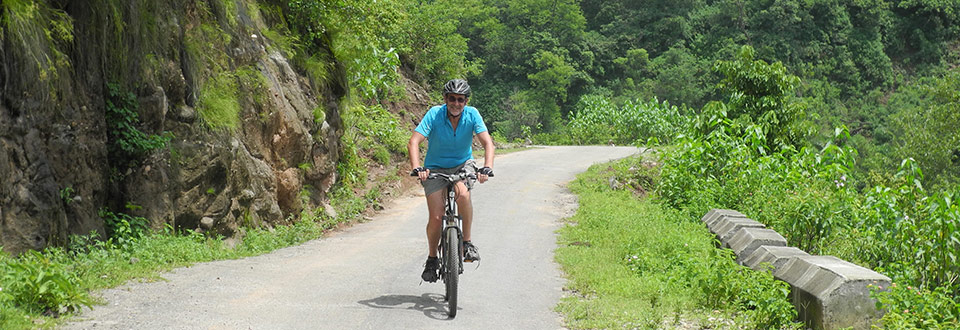
ACCOMMODATION
Our price includes accommodation and guides for 15 nights. Please let us know if you require extra accommodation either at the start of the trip in Delhi or Amritsar or in Delhi or Agra at the end of the trip – to be paid for separately.
Prices have been calculated for double occupancy of rooms. If you prefer to book a single room the cost of a single supplement is £185 to be paid at the time of booking. Single supplements are subject to availability.
Our accommodation is varied according to what is available. Where possible we provide comfortable rooms with en suite bathrooms, reliable electricity and hot water. In some cases bathrooms with be shared and occasionally the accommodation will be ‘basic’.
FOOD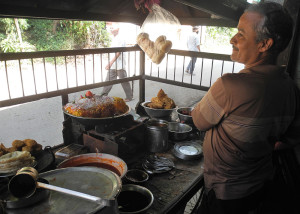
Breakfast is included throughout the trip, as well as some lunches and dinners as indicated in the above notes. You should allow at least £12 per day for meals and drinks that are not included. You can eat out very cheaply in India so you may not spend this much, but if you go to the more expensive restaurants or drink a lot of beer (wine is very expensive) you will spend more. In a lot of towns there is a choice of restaurants and type of food however please note that this is not always the case especially in more remote places. If you are a vegetarian, India is probably one of the best destinations to travel to. Tea and soft drinks are very cheap. Mineral water is widely available and recommended.
TRANSPORT
We will be picked up in Amritsar by private mini busses as support vehicles, large enough to seat the whole group when required and will carry all the bags. The support vehicle(s) will accompany us until we reach Shimla from where we take the narrow gauge railway to Kalka where we meet the main line and take a comfortable chair car to Delhi.
WEATHER
In November the weather is generally cool in the hills though sunny days can mean that cycling can be hot.(10-30ºC) and nights cool or mild (5-15ºC). It is possible for it to rain in November but humidity is low and little rain is expected. You should bring a jumper for the cool evenings as well as sun hat, sun cream and sunglasses. In any mountain area the weather is never wholly predictable and you should be prepared and equipped to deal with any eventuality.
PASSPORTS AND VISAS
All nationalities require a full passport that must be valid for 6 months beyond the intended length of stay. It is your responsibility to have the correct personal documents and to obtain your own visa. Visas are required if you are British and for most other nationalities.
To apply for the Indian visa online visit: www.indiantouristsvisa.in
BICYCLES
Local bikes provided:
Firefox Target or Trek mountain bikes with front suspension Please let us know that you need a bike ‘ in country” and let us know your required size at the time of booking.
Bringing your own bike:
Plenty of people choose to bring their own bikes on our trips. If you wish to bring your own bike, please note that we cannot guarantee against small scratches and paintwork damage involved in the loading and unloading from support vehicles.
WHAT TO BRING
Essential Equipment and Clothing
Extra bike bits:
You may like to bring your own saddle (excluding the seat post), or over gel cover to fit to the hire bikes. Please note that you are responsible for your own equipment, and removing your saddle at the end of the trip.
Personal equipment
Please bring the following personal items, which we view as crucial for your health and safety:
- A helmet*
- eye-protection (sunglasses)
- cycling gloves
- water bottles or hydration system (e.g. camelbak).
* Please note that helmets must be worn when riding at all times. You must bring your own helmet with you for this trip, as they are not available for hire.
Also bring:
- Warm jacket
- Sunscreen
- Torch
- Socks
- Comfortable clothing
- Slip on shoes for post cycling
Please be aware that you will be passing through some remote villages where the locals are unaccustomed to seeing people in tight lycra – we recommend you wear baggy shorts or loose ‘over shorts’ so as not to cause offence and tops that don’t reveal too much bare skin and cleavage.
Bring breathable clothing, and a lightweight waterproof/windproof top.
Shoes with relatively stiff soles are best for biking.
Most people want to carry certain items with them during the day while cycling, for this we recommend a large bum-bag or small closefitting daysack.
** We cannot provide rehydration tablets, gels, energy bars etc. so please bring what you think you will need.
INSURANCE
You are responsible for your own Insurance coverage. Please provide the details on request.
You should also be aware that cycling of all kinds has its dangers and that accidents can happen from time to time. Please ensure that you are properly prepared for the riding you are going to undertake and pay full attention to any advice given by your local cycling guides.
COSTS
The basic cost of this 15 day trip is £800 Plus £500 committed as donation to Nishtha.
Total £1,300 for 15 days.
Additional expenses
Your flights and transfers to Amritsar
Single supplement: £185. (to be paid by August 1st 2018)
Local bike hire: £180. (for the duration of the trip)
Daily expenses of approximately £12 per day – (bring in cash)
(from this a kitty of £3 a day (Rs 4000 per person for the trip) will be collected at the beginning of the trip to cover snacks, water and tips throughout the trip).
PAYMENT
In order to register for this trip please fill in the following form (omitting payment details) ad we will contact you to let you know how and when to pay.
Send your details and specific requirements to: philippa@russellweb.net
Cc imogen.batterham@btinternet.com
Payment will open on 1st April – details will be provided then
Full payment will be required by August 1st 2018. (Payment details to be provided)
